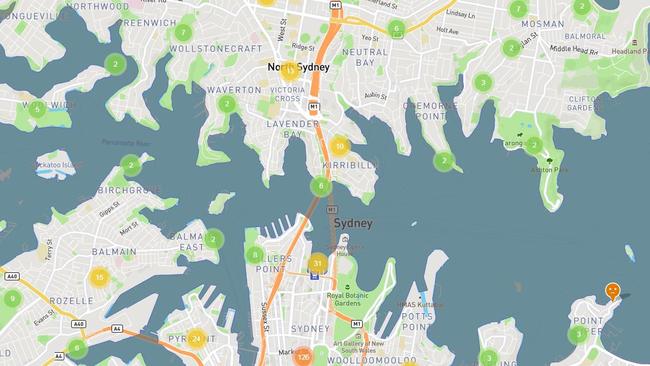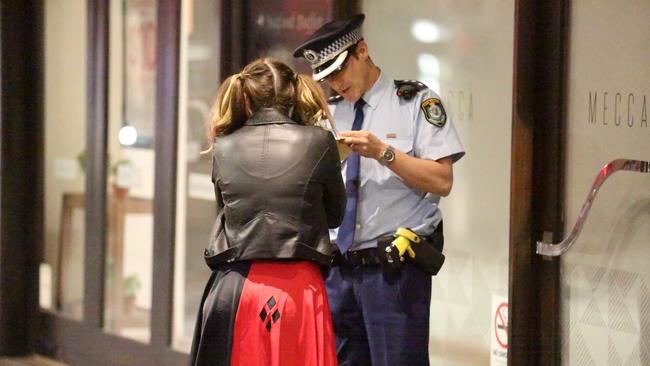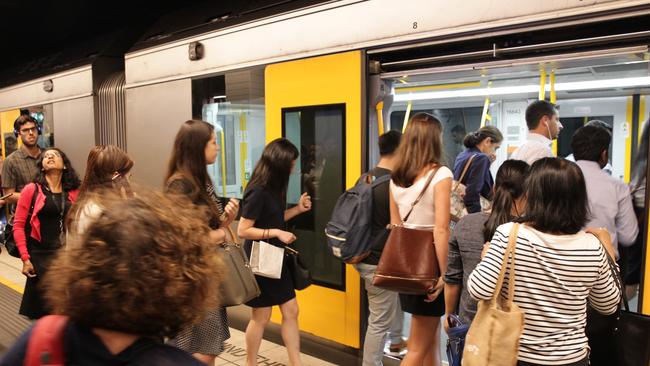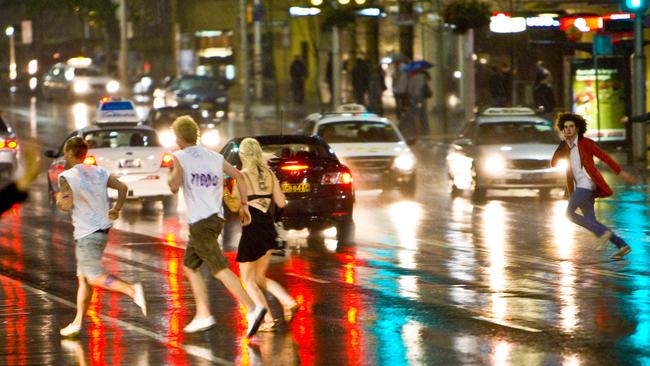Harassment hot spots: Sydney’s most dangerous places for young women
DIGITAL mapping technology has been used to highlight Sydney’s hot spots where women say they experience harassment most.
NSW
Don't miss out on the headlines from NSW. Followed categories will be added to My News.
DIGITAL mapping technology has been used to highlight Sydney’s hot spots where women most experience harassment.
The city mapping project by global girls’ rights group Plan International Australia has revealed public transport, busy CBD thoroughfares and late night areas are hot spots for harassment, whereas universities, the ferries and gay and lesbian friendly areas are considered safe and welcoming places.
Sydney is one of five locations worldwide where Plan International is currently using digital mapping technology via it’s Free to Be city safety map to record real experiences of thousands of girls and young women navigating the city. Delhi, Kampala, Lima, and Madrid are also participating in the project.

Areas of high incidences of harassment or ‘sad’ spots include: Kings Cross, George Street (around Town Hall), Pyrmont Bridge, King Street and Wentworth Park. Public transport is emerging as problematic, with clusters of ‘bad pins’ around Central bus station, Central Station, St Peter’s Station, Blacktown Station and Parramatta Stations.
The ‘happy’ spaces where young women in Sydney feel welcome and safe include: Circular Quay (particularly on the ferries), Central Park, UNSW and Macquarie University campuses, McIvor Baths Coogee and Oxford Street.
Plan International Australia’s CEO Susanne Legena said:“This is a very ambitious crowdsourcing project that is collecting real stories from real girls and women about how they experience cities.



“It’s not about labelling cities as ‘dangerous’. It’s about helping authorities and planners to reimagine public spaces so that everyone can enjoy city life equally.”
The project comes on the back of a new report by Plan International Australia – released today – that has found a concerning link between multiple experiences of street harassment and poor mental health among young women.
The Sexism in the City report is a survey of 500 women aged 18 to 25 in Sydney. It revealed one in three young women who have been harassed more than once a month self-report anxiety or depression as a direct result.
The most common forms of street harassment reported were: cat-calling (83%), menacing behaviour (55%), being told to smile (44%), having their path blocked (30%), being touched inappropriately (30%), physical violence/sexual assault (10%). In almost all cases, the perpetrators were men (95%). One in three young women said they were first harassed between the ages of 11 and 15.



Ms Legena said street harassment is a common and often silently endured experience, because reporting mechanisms are not good enough.
“What this report tells us, loud and clear, is that cat-calling and menacing behaviour is not ‘harmless fun’ or ‘a compliment’. It has real and lasting repercussions. It’s affecting the well-being of our young women and in many cases, they are simply opting out of using public spaces.
“Plan International is a global organisation that works to make cities safer for young women and girls around the world. The disturbing picture emerging from our current research on street harassment is that it is very common, it can be very serious, and perhaps most concerning, it begins before a girl even reaches puberty.
“We know that Sydney is a fantastic city and one of the safest in the world, but even so, it could be improved by acknowledging street harassment is a problem that really needs to be addressed.”
Sexism in the City key findings:
■One in four young women in Sydney experience street harassment at least once a month.
More than one-third of respondents were first harassed between the ages of 11 and 15.
■One in three girls who have been harassed once a month or more report experiencing anxiety, depression or ongoing mental health issues as a direct result.
■Those who have been harassed on a regular basis (once a month or more) are twice as likely to report experiencing anxiety, depression or ongoing mental health issues as a result.
■Girls who first experienced street harassment at a younger age (15 or under) were more likely to report ongoing impacts on their behaviour and wellbeing.
■Around three in four young women were harassed in front of bystanders, yet just 16% say someone stepped in to help them.
■Just one in 10 young women in Sydney say they always feel safe to go out at night. One in six say they always feel unsafe in the city after dark.


